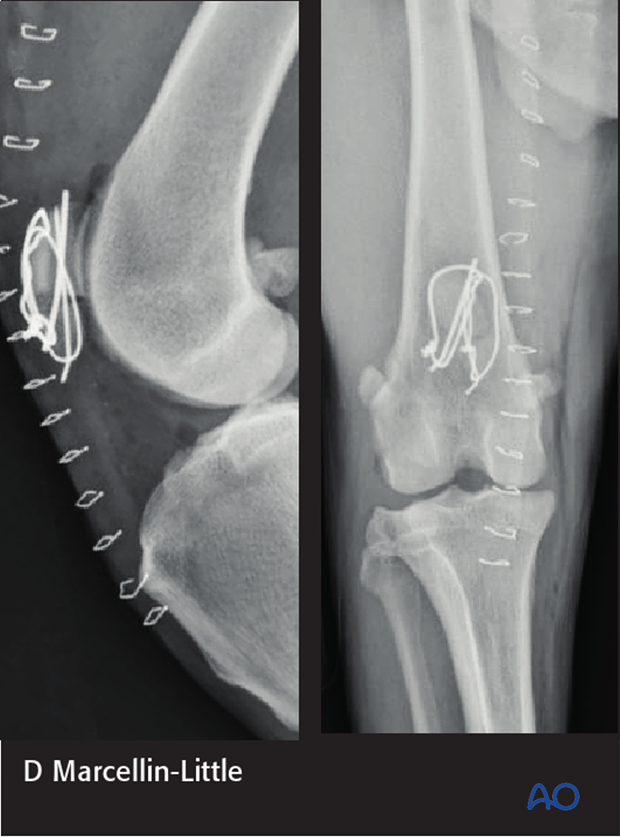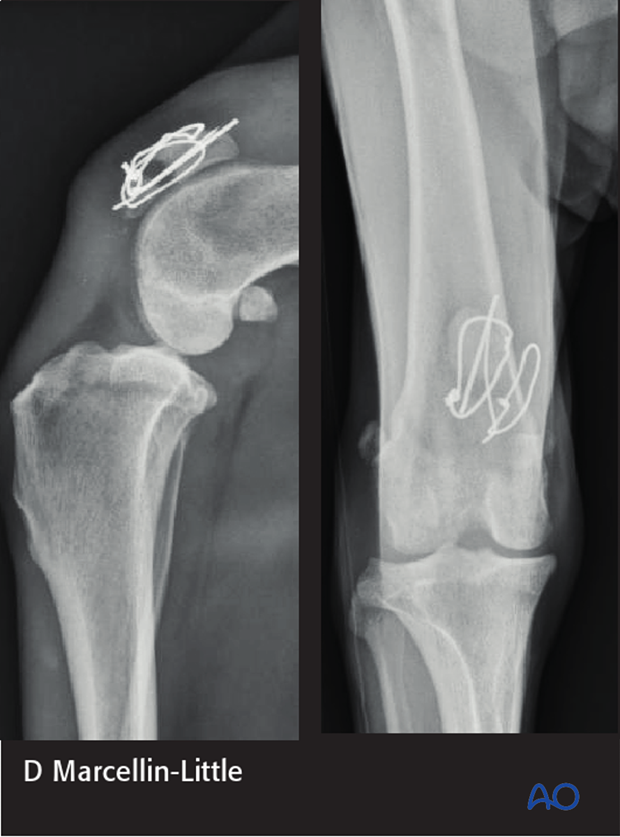Complications in patellar fractures
- 1/5 – General considerations
- 2/5 – Failure of fixation leading to loss of reduction
- 3/5 – Nonunion
- 4/5 – Soft tissue irritation
- 5/5 – Cartilage damage and osteoarthrosis
1. General considerations
The most common complications in patellar fractures are:
- Failure of fixation leading to loss of reduction
- Nonunion
- Soft tissue irritation
- Cartilage damage and osteoarthrosis
2. Failure of fixation leading to loss of reduction
The surgical options for fixation of patellar fractures are limited because of the small size of the patella, and the fact that approximately half of its surface is covered by articular cartilage. Blood flow to the patella may be more limited than other parts of the body that are surrounded by large muscles. Also, the patella is subjected to a large amount of tension. These factors increase the likelihood of failures of fixation.
Most failures include the proximal to distal distraction of bone fragments. Minor displacements can lead to nonunions that are compatible with limb use. Major displacements can lead to severe limb disuse.3. Nonunion
Nonunions generally result from the separation of fracture fragments. Fragment separation results from a loss of purchase of lag screws or K-wires. In the absence of a step in the articular surface nonunions are compatible with appropriate limb use. They may not require a surgical revision.
Nonunions with major displacement should be revised before long-term remodeling of the bone fragment.
Revisions of failed patella fracture repairs are technically challenging because of the limited number of fixation options.Nonunion case example



4. Soft tissue irritation
The tips of implants used to repair the fractures may cause inflammation or damage the patellar ligament or parapatellar fibrocartilages.
Inflammation can lead to chronic lameness. If there is bone union the implants can be removed.












